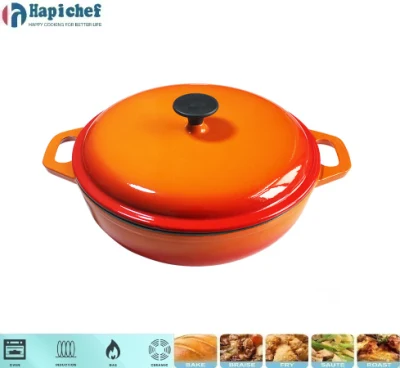How to Properly Season Your Cast Iron Skillet for Best Results
Conditioning Cast Iron Skillets A Complete Guide
Cast iron skillets are a beloved kitchen staple cherished by cooks and chefs worldwide. Known for their durability and excellent heat retention, these skillets can last for generations when properly cared for. One crucial aspect of maintaining a cast iron skillet is conditioning, which involves seasoning the skillet to create a natural non-stick surface and to protect it from rust. This article will guide you through the process of conditioning a cast iron skillet, ensuring it remains a valuable asset in your kitchen.
Understanding Seasoning
Seasoning a cast iron skillet involves applying a thin layer of oil to the surface and heating it to create a polymerized coating. This coating is what makes the skillet non-stick and prevents food from bonding to the iron. Additionally, seasoning protects the skillet from moisture, which can lead to rust. While some may think of seasoning as a one-time event, it’s actually an ongoing process that enhances the skillet's performance over time.
Choosing the Right Oil
Selecting the right oil is essential for effective seasoning. Common options include vegetable oil, flaxseed oil, canola oil, and grapeseed oil. These oils have high smoke points and can create a durable layer of seasoning when heated. Flaxseed oil is particularly well-regarded among cast iron enthusiasts for its ability to form a hard, durable layer. However, any oil with a high smoke point will work; the key is to avoid oils with low smoke points, such as olive oil, as they can create a sticky residue.
Steps to Condition Your Cast Iron Skillet
1. Cleaning the Skillet Start by cleaning your cast iron skillet thoroughly. If it’s new, it may have a factory coating that needs to be removed. Use hot, soapy water and a stiff brush or sponge to scrub away any residues. For older skillets with rust or stuck-on food, you may need to use a mild abrasive, such as salt or baking soda, along with the scrubber. Rinse and dry the skillet completely.
conditioning cast iron skillet

2. Applying Oil Once the skillet is clean and dry, pour a small amount of your chosen oil into the skillet. Using a paper towel or a clean cloth, spread the oil evenly over the entire surface, including the bottom and handle. Make sure to apply a thin layer, as too much oil can result in a sticky surface after seasoning.
3. Heating the Skillet Preheat your oven to 450°F (230°C). Place a baking sheet or aluminum foil on the lower rack to catch any drips. Put the oiled skillet upside down on the middle rack. This allows excess oil to drain off and prevents pooling. Bake the skillet for about an hour.
4. Cooling Down After an hour, turn off the oven and allow the skillet to cool inside. This gradual cooling helps the seasoning bond to the skillet. Once it’s safe to handle, remove the skillet from the oven.
5. Repeat as Needed For optimal results, repeat this conditioning process several times. Each layer of seasoning builds upon the last, creating a non-stick surface that improves with use.
Maintaining Your Cast Iron Skillet
After conditioning, make sure to maintain your skillet properly. After each use, avoid using soap; instead, wipe it clean with a damp cloth or scrub with coarse salt. If food sticks stubbornly, you can use a bit of mild dish soap, but remember to reapply a thin layer of oil after cleaning to maintain the seasoning.
In conclusion, conditioning a cast iron skillet is an essential practice for anyone looking to optimize their cooking experience. By following the steps above and maintaining your skillet regularly, you can enjoy a non-stick, rust-free cooking surface that enhances your culinary adventures for years to come. Happy cooking!
-
Why Every Home Cook Needs a Cast Iron Meat PressNewsNov.12,2024
-
Unlock Perfectly Seared Steaks with the Cast Iron Meat PressNewsNov.12,2024
-
Master the Art of Cooking Thick Cuts of Meat with a Cast Iron Meat PressNewsNov.12,2024
-
How to Care for Your Cast Iron Meat Press: Tips for Longevity and PerformanceNewsNov.12,2024
-
How a Cast Iron Meat Press Enhances the Flavor and Texture of Your BurgersNewsNov.12,2024
-
Roasting Pan for Perfect MealsNewsNov.04,2024
-
Perfect Skillet for SaleNewsNov.04,2024
